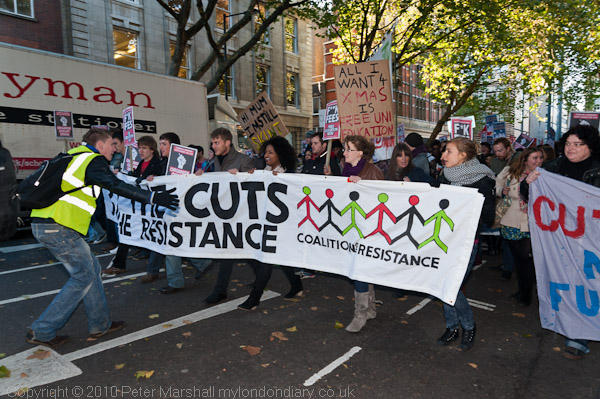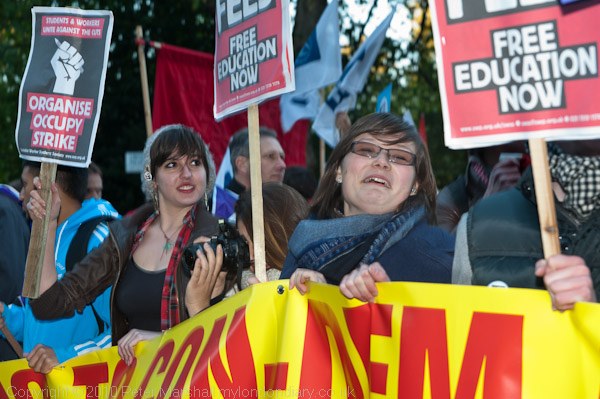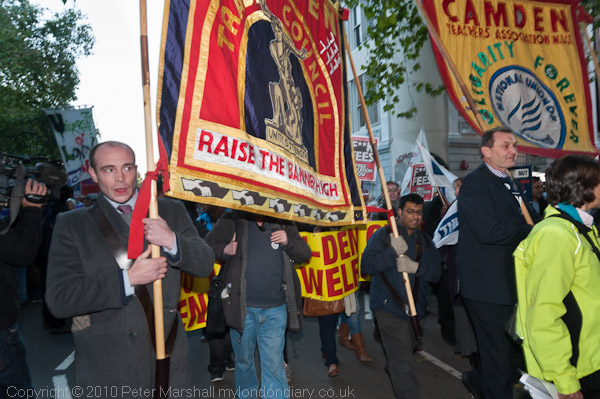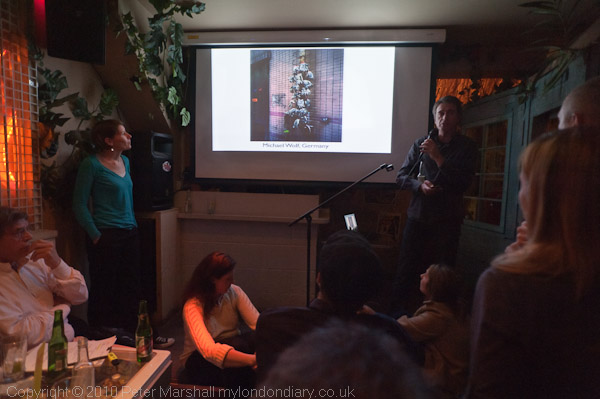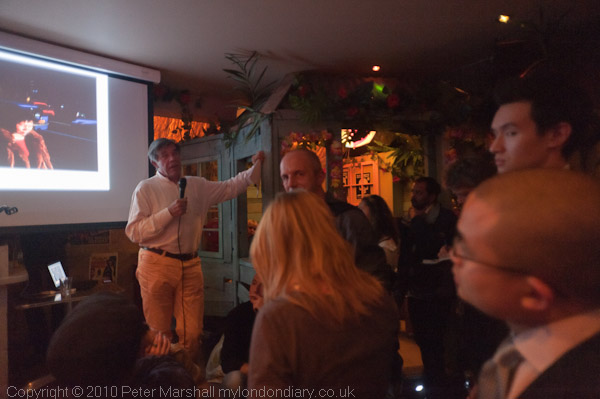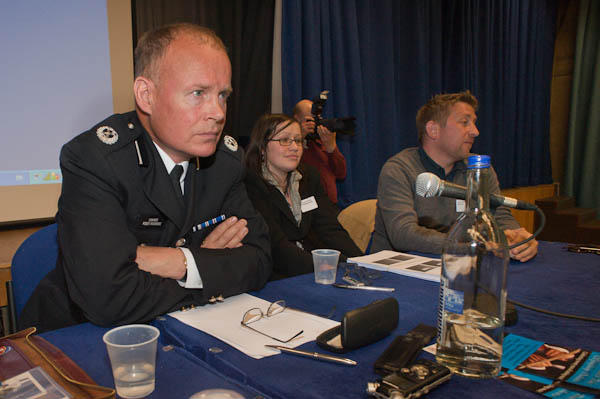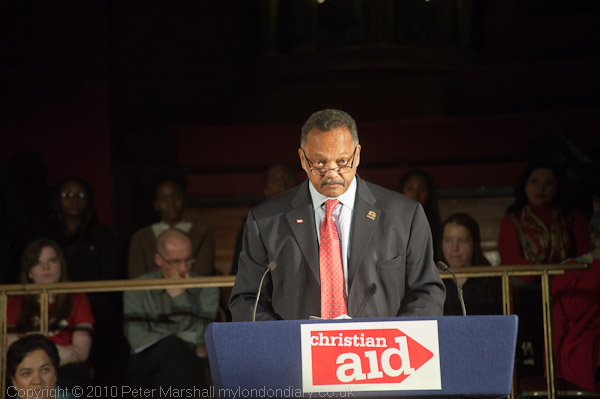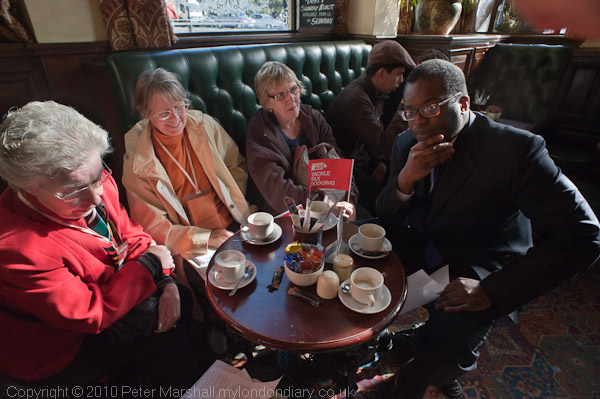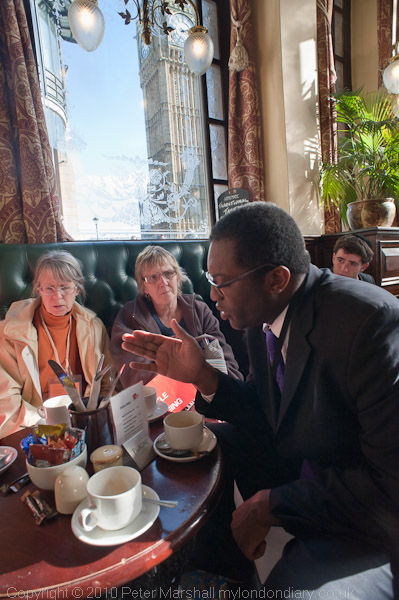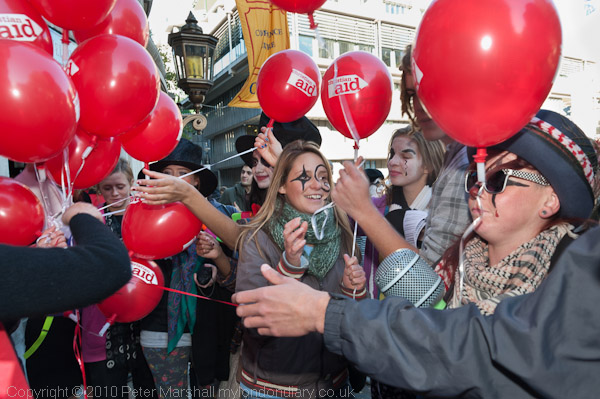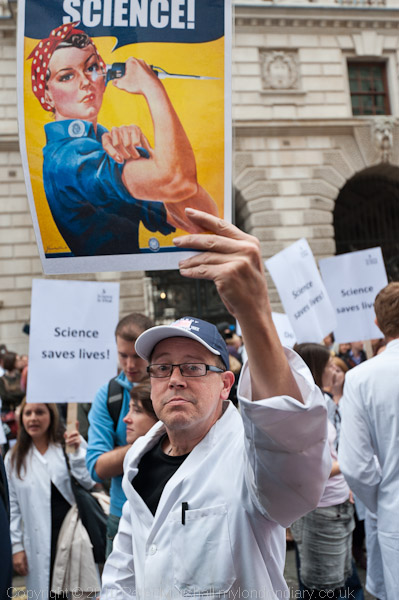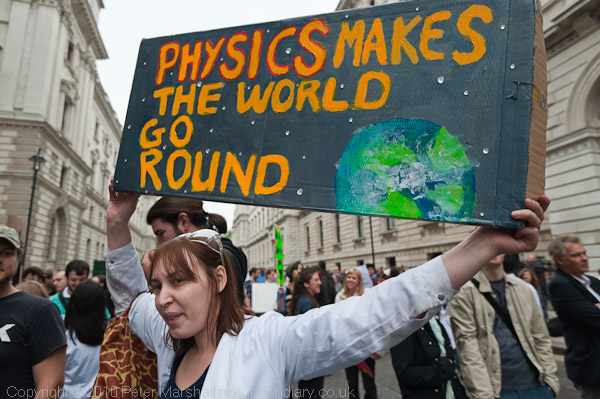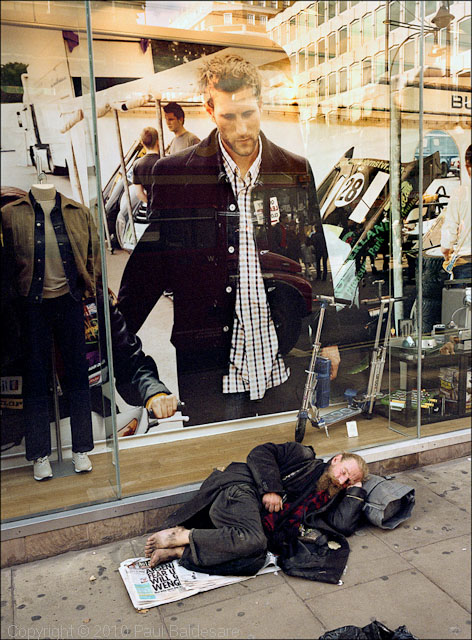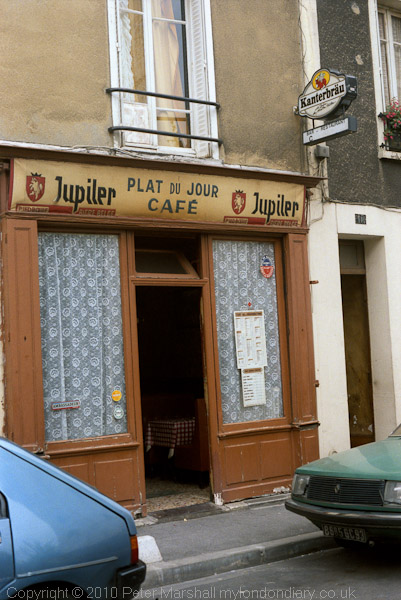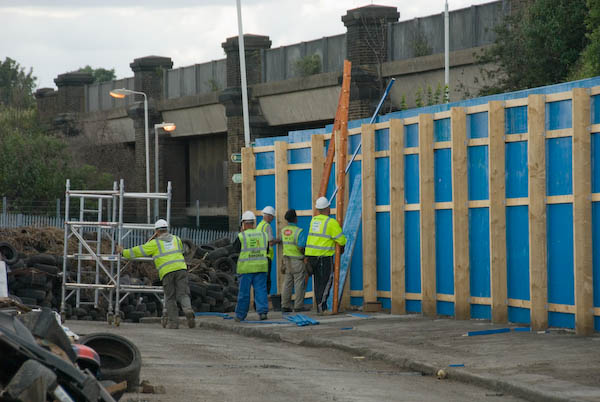Monday was an interesting day for me. After a few hours work on the computer I had a very nice lunch at a small restaurant in Tolworth with a couple of friends then went with one of them to London to spend an hour or so looking at some of the other shows in the East London Photomonth, (and one was in a pub) before going on the the Photographers Social in a bar in Soho. A minutes walk from a decent pub.
The following day I had a bit more time after a meeting with a friend at a London hospital and was able to see far more, including two of the major galleries taking part in the event, Flowers East and Rivington Place, before rushing to a union meeting where a distinguished and knowledgeable panel discussed the question whether street photography would still be around in five years time.
But some of the experiences finding shows were rather like those I had visiting the Brighton festival a couple of weeks ago. Galleries that according the the leaflet should have been open at the time we called but were not, one address that was a locked building with no indication that there was even a gallery there, as well as several places where a quick look through the window told us it was not worth entering. But I did find some work worth looking at, particularly on the Tuesday.
The oddest experience came when I went into a gallery on Rivington St, and asked one of a small group of people sitting around and talking there where the exhibition was. It seemed to be quite a large space, and all I could see were fairly empty walls with the occasional poster.
At first there was some laughter as I’d obviously picked exactly the wrong person to ask, but then one of the men asked to see the programme where the show was listed. He scratched his head and told me he knew the photographer, would have been happy to put on a show of his work, but that he knew nothing about it, and the show didn’t exist.
He then said that someone else had come in and asked about it a couple of weeks ago. This was a shock, apparently only two visitors in more than three weeks, and was also rather a surprise. My own show, Paris – New York – London, with Paul Baldesare and John Benton-Harris, only a couple of hundred yards away, tucked away in a side street and not the easiest place to find has been attracting quite a few viewers over the weeks as well as the normal visitors to the Juggler café it is part of. Surely it can’t just be because I’ve mentioned it here most days!
I was surprised again later, visiting one of the more interesting shows on at Rivington Place, a superb well-staffed gallery space – the first new-build public gallery in London for 40 years when it was opened in 2007 – to find that I had both shows to myself (and in each case an attendant) while I spent some time looking at ‘Ever Young’, showing 60 years of photography by James Barnor, born in 1929 in Ghana (he tells about his early career here on ‘Nowness‘) and now living in London.
Much of his studio photography from Ghana seemed a little ordinary, but there were a few images that stood out, and in the 1950s his ‘Ever Young Studio‘ was visited by many leading figures around the time that Ghana, in 1957. As well as the studio photography he was also working for a newspaper, The Daily Graphic, and later for Africa’s most popular magazine Drum.
In 1959 he came to England where he studied photography and joined the staff at the Medway College of Art in Rochester. In the 1960s he continued to photograph, including a number of pictures of cover girls that are included in the show, but also covering other stories of African interest including Mohammed Ali in London for a fight and BBC Africa Service reporter Mike Eghan.
In London he was trained in colour processing by Agfa-Gevaert and returned to Ghana in 1969 as their representative to establish colour processing in that country. In retirement he now lives in London, not far from Agfa’s UK HQ.
Barnor was certainly a very proficient photographer and there are several very nice images in the show, including two of people posing in Trafalgar Square and at Piccadilly Circus. But the great interest in his work is more in the different cultures and changing times it spans and to which he had access to photograph some of the leading figures particularly in Ghana, and in the relationship his work embodies between the new Africa and the old colonial power. It’s certainly a show worth seeing, and continues until 27 Nov 2010 (closed Sun & Mon.)
Also on show at Rivington Place is a fascinating set of portraits collected by the leading black intellectual and civil rights activist of the era, W E B Du Bois for the book ‘Types of American Negroes, Georgia, USA‘ and exhibited in at the 1900 Paris Exposition Universelle in the ‘American Negro Exhibit‘. Consisting of pictures from various sources and in a range of styles, these images challenged the racial stereotypes that were a part of the scientific thinking of that age.
Looking at them brought a number of thoughts to my mind. One was of a job I did for an Indian friend perhaps 20 years ago, taking some pictures of him and some of his friends. They were unhappy with the black and white prints I produced, but he was very reluctant to explain why. Eventually I realised that the problem was in the skin tones, which I had printed as I normally did, with an accurate tonal rendition. I made some further prints, dodging the faces to lighten them considerably to a more ‘European’ tone and they were happy. Looking at some of these images it is clear that in some of them a similar process had been taking place, using either lighting or printing to create very light (in some cases very white) skin tones. Of course the ‘ordinary’ or ‘orthochromatic’ emulsions in this era had a certain lightening effect on all portraits, whatever the skin colour.

Image from the Du Bois album in the Library of Congress LC-USZ62-124654
Another thought I had was that many of these pictures could actually have been from my own family album. Taken away from their context there are many that would not be recognised as black. The gallery notes suggest that this collection “can be read as the origins of a visual construction of a new African-American identity” but it seems more to me to suggest that this identify is not greatly dependent on the visual. But Du Bois’s intention to produce ‘an honest straightforward exhibit of a small nation of people, picturing their life and development without apology or gloss, and above all made by themselves‘ has certainly resulted in a fascinating collection.
At the Library of Congress you can see the complete collection of 482 African American Photographs compiled by Du Bois for the Paris show online, and can download them as jpegs or tiffs (large enough to make the prints in the show.) The portraits start on the second page of thumbnails. The image here comes from that collection and may or may not be in the Rivington Place show.
It is a thought-provoking show, and other people with other backgrounds will certainly have different thoughts from mine, a couple of which I’ve shared above. In many ways the decision to present them all in the same format in two large grids on the gallery wall makes sense, but I did find myself asking what the originals actually looked like, and in some respects the online presentation does that better.
The other shows not to be missed are at Flowers East (also closed Sun & Mon) and I mentioned them briefly in a post after the packed opening there but I hope to write more about them and some other shows from Photomonth 2010 another day.
